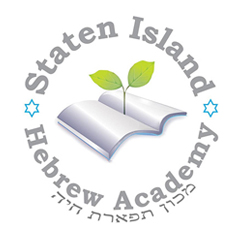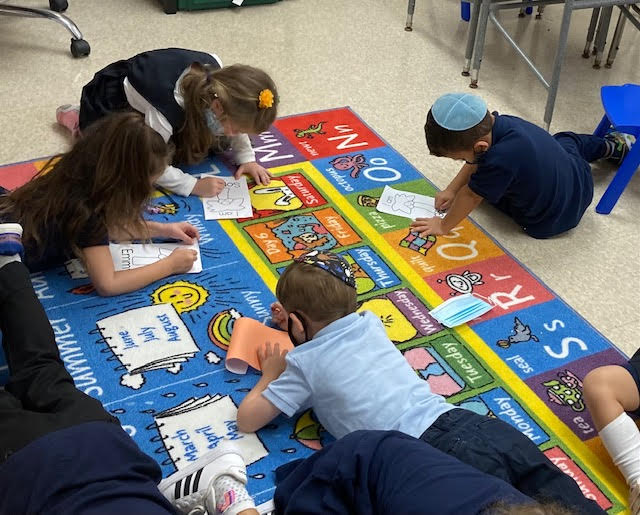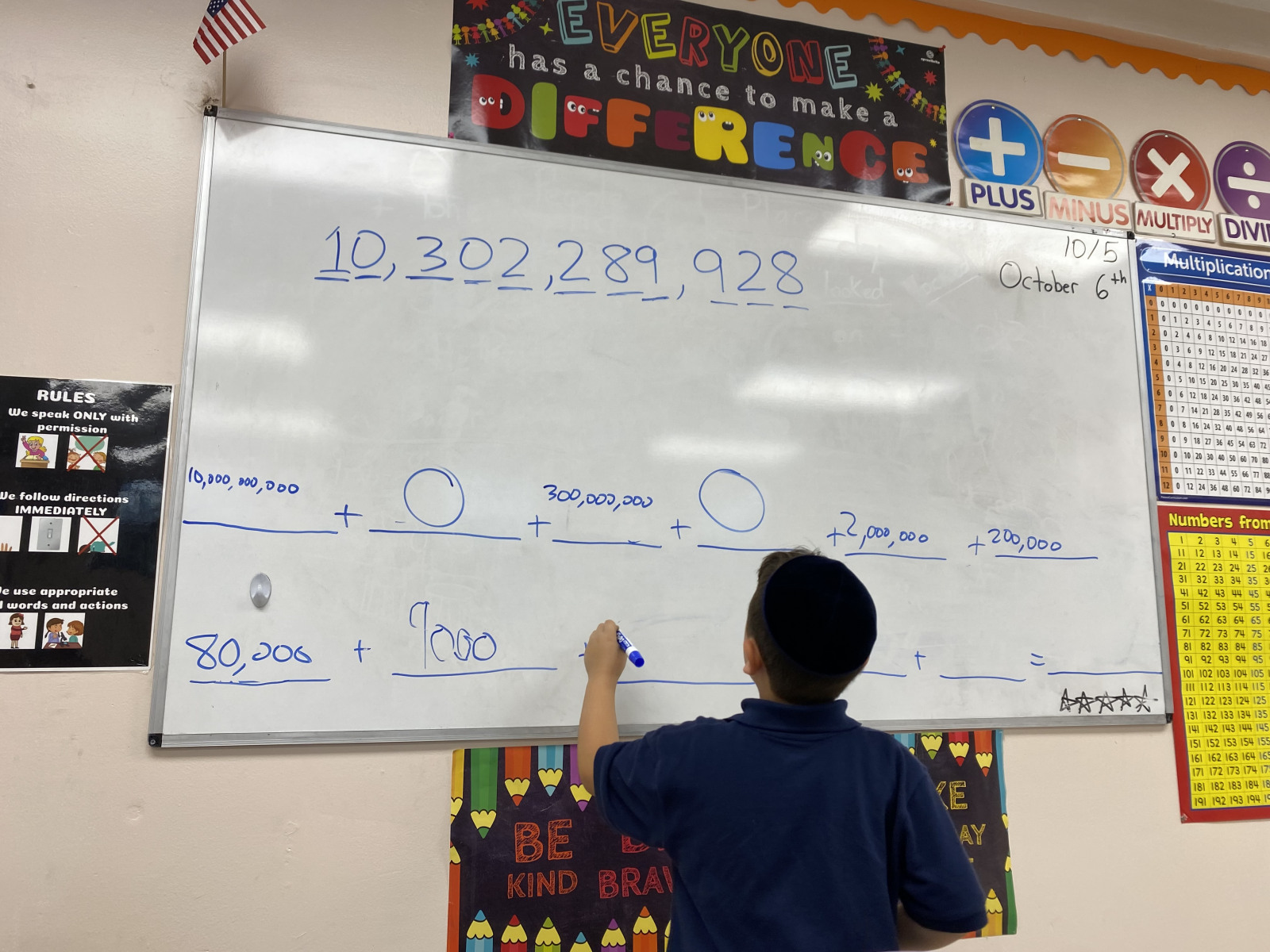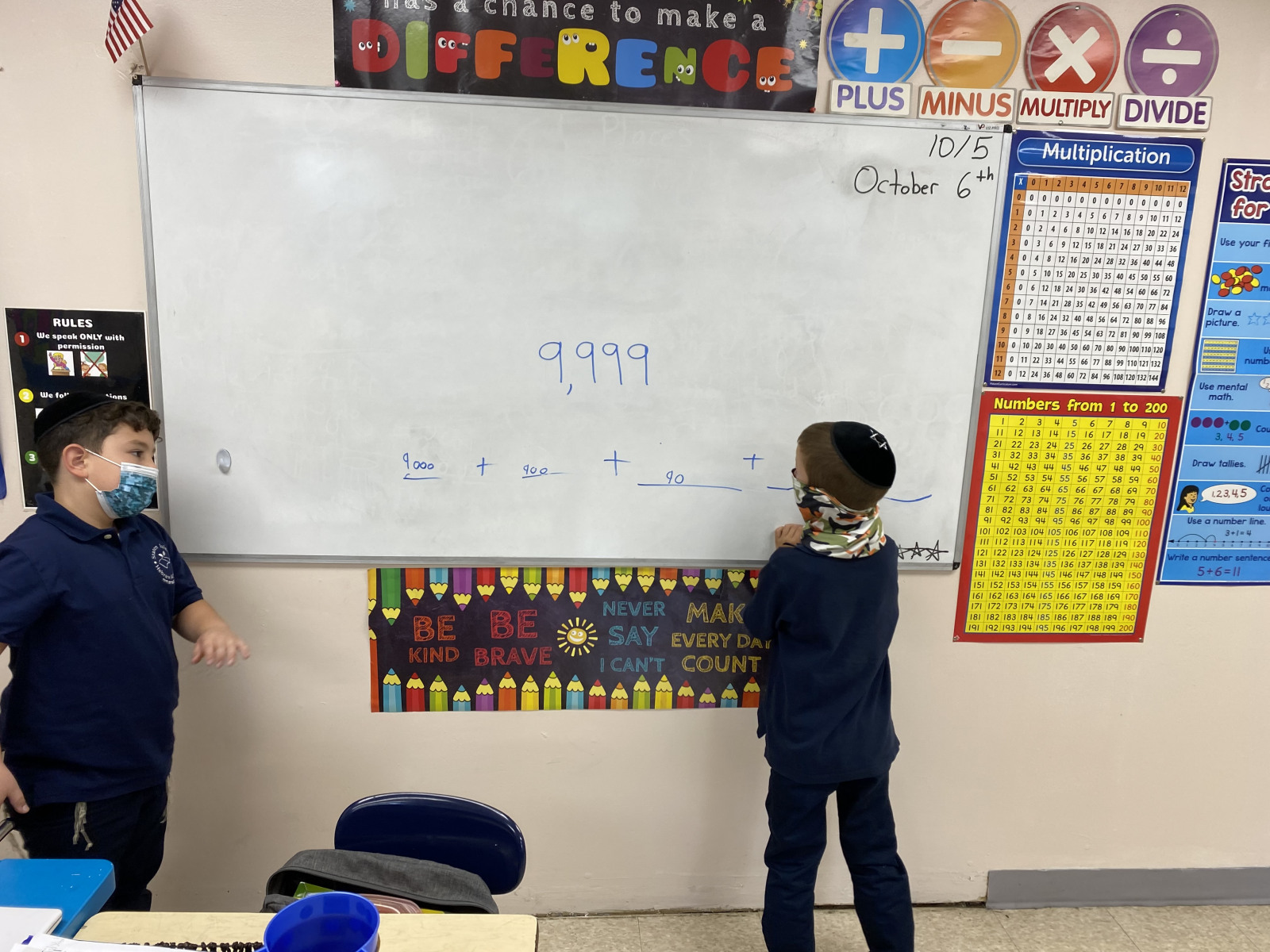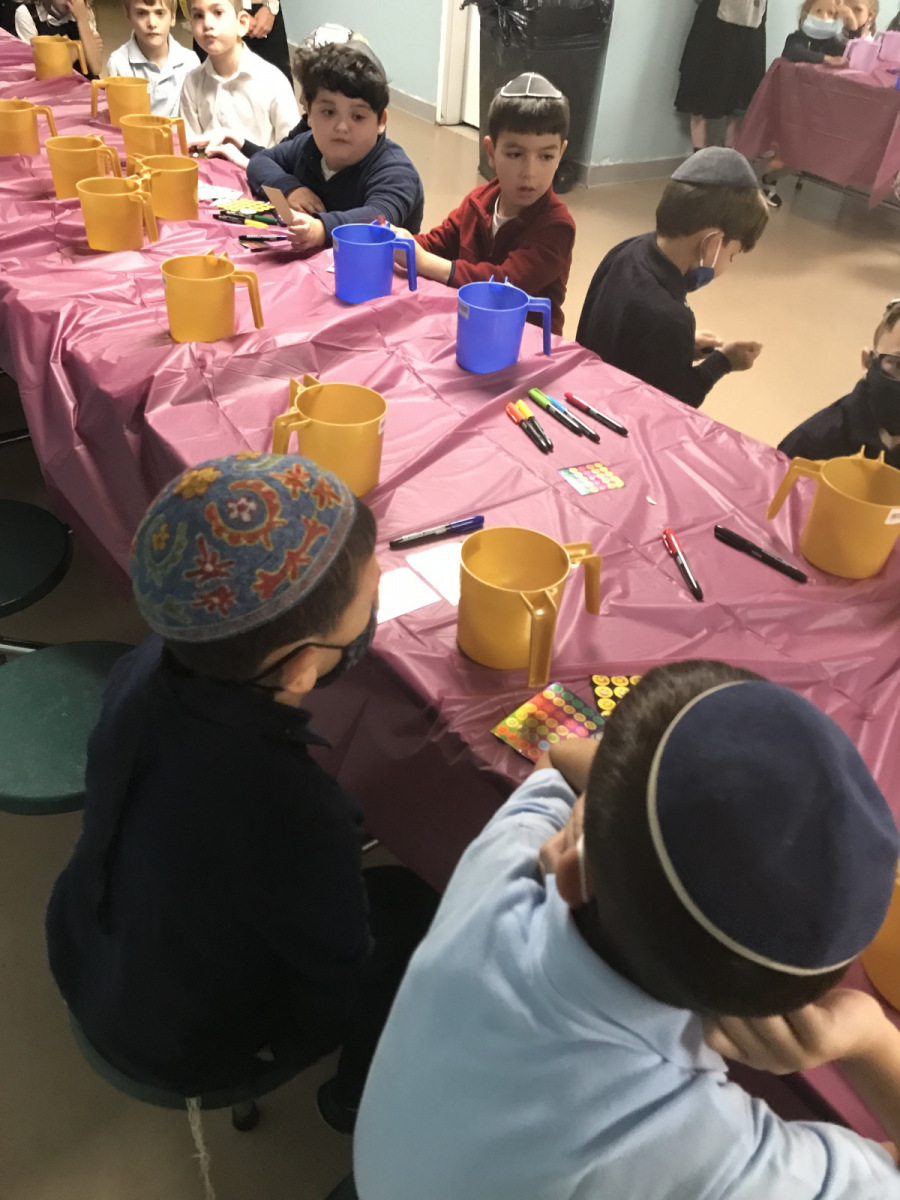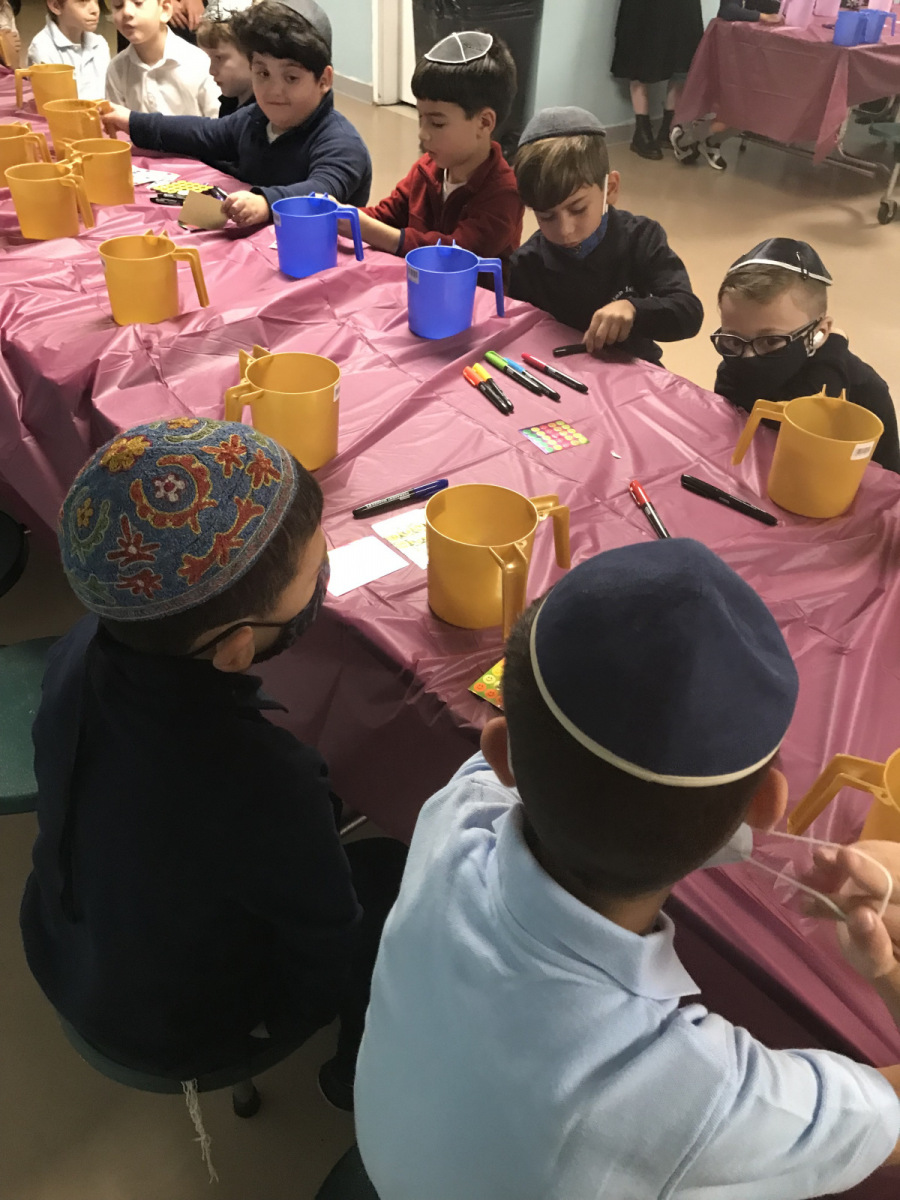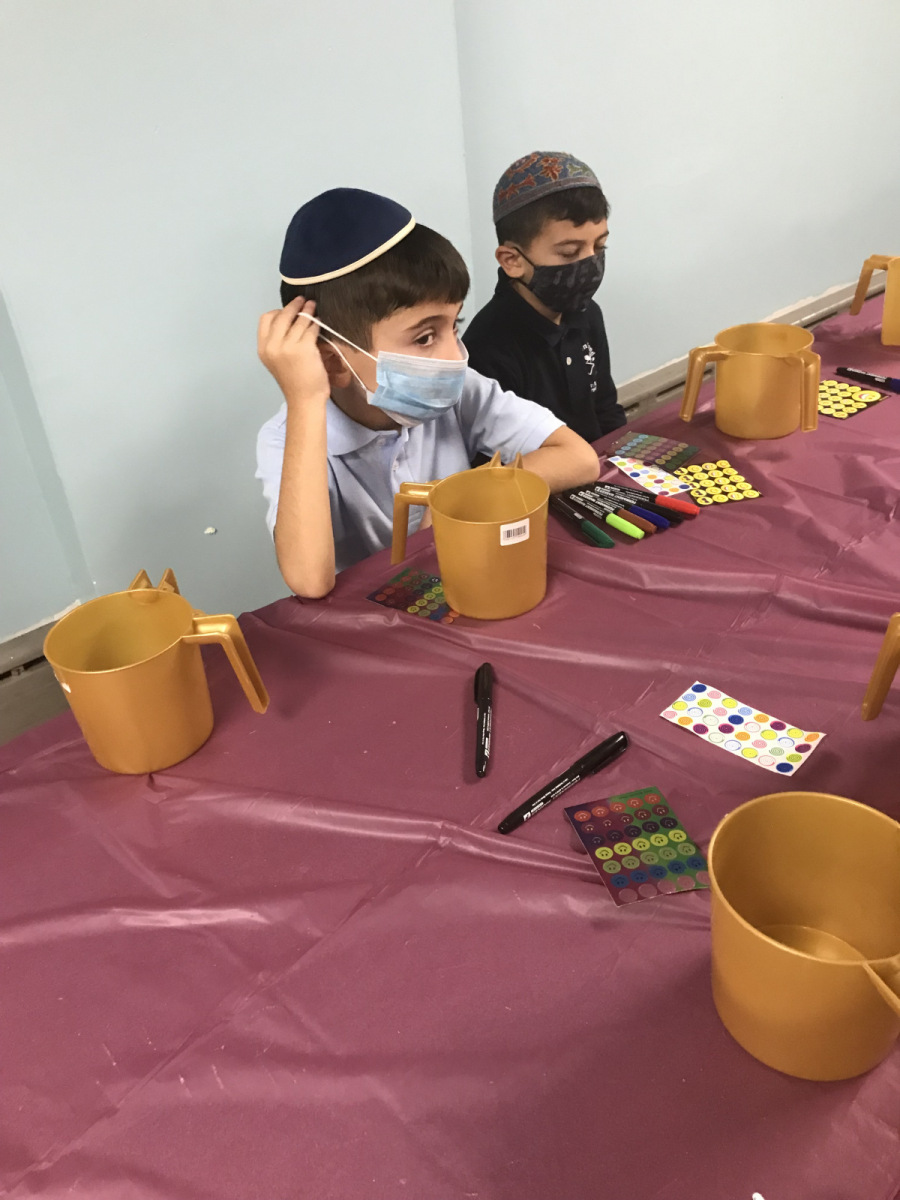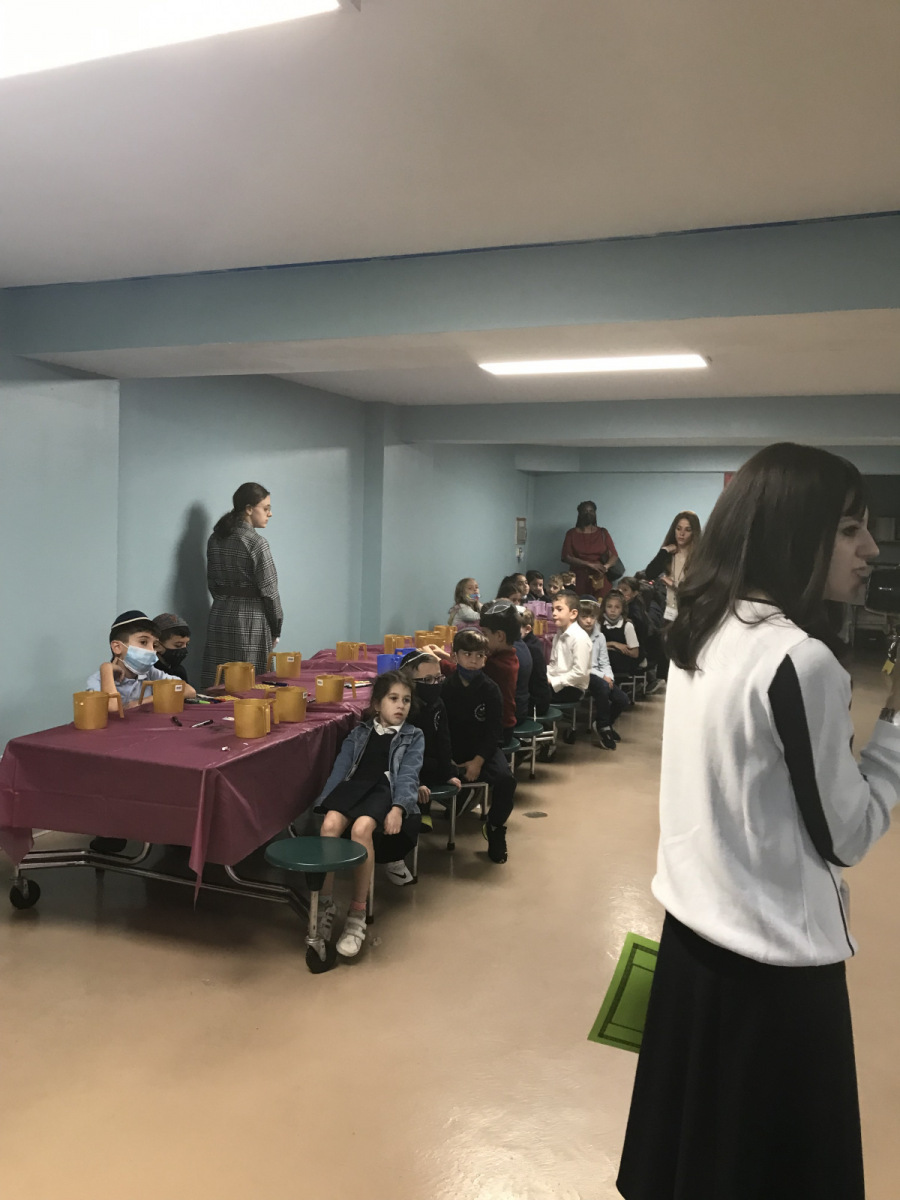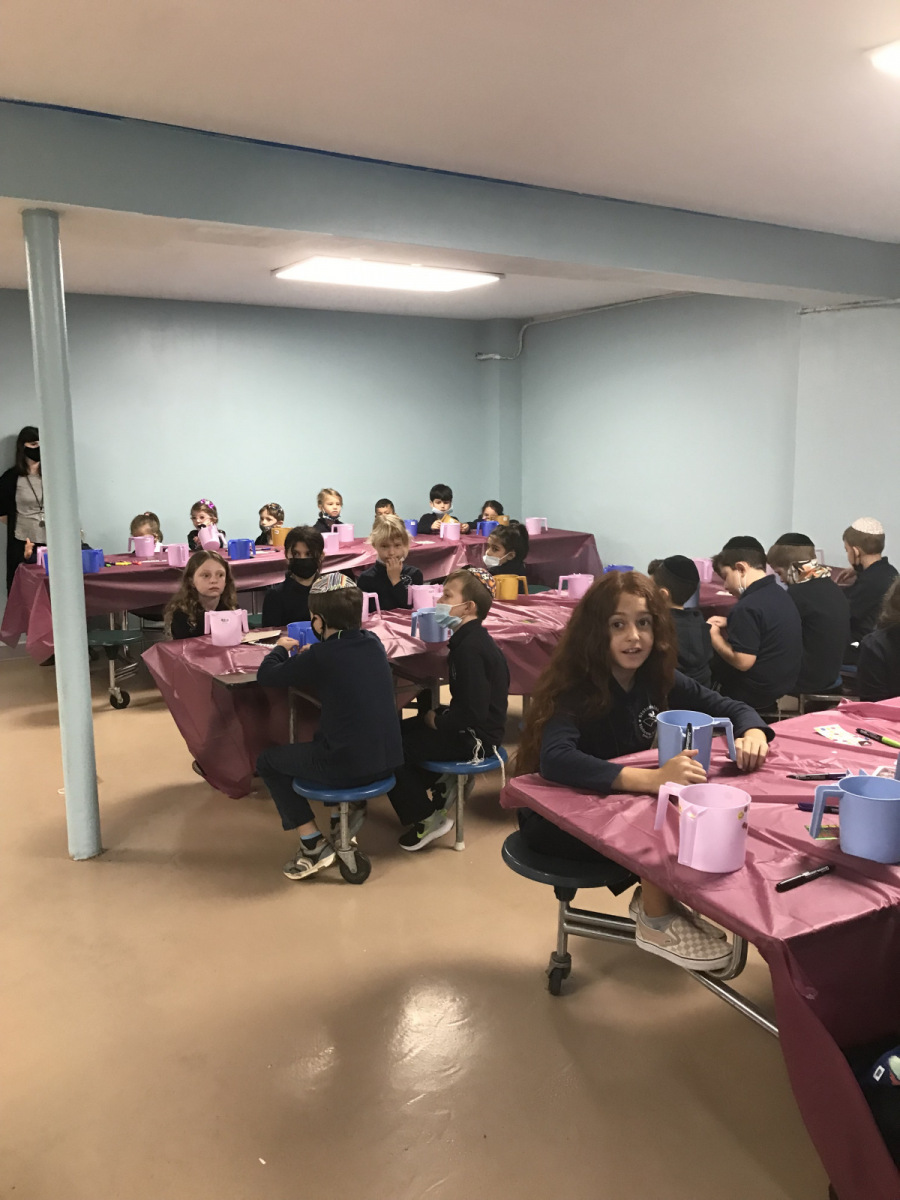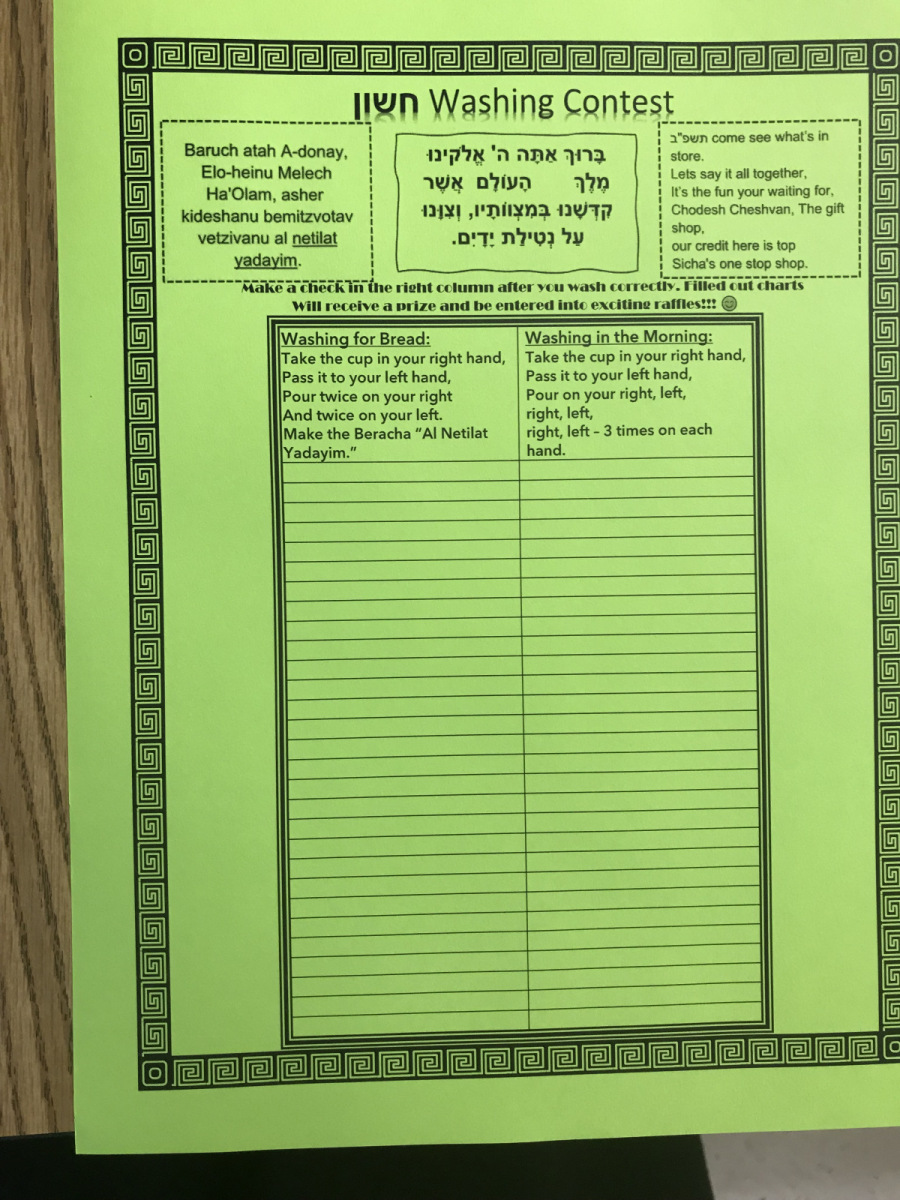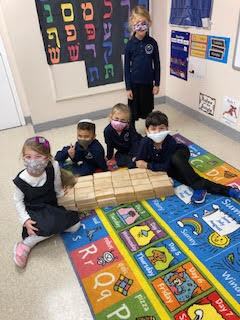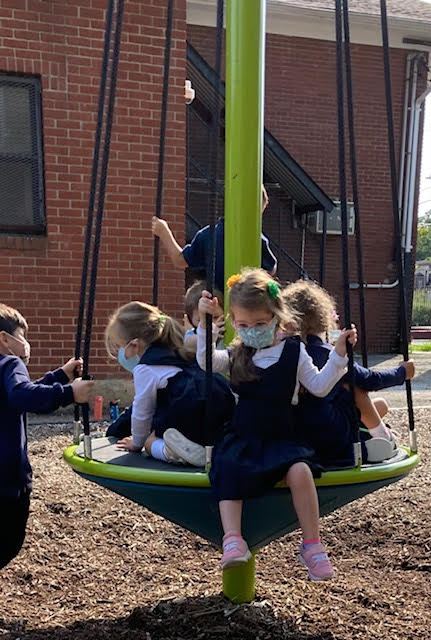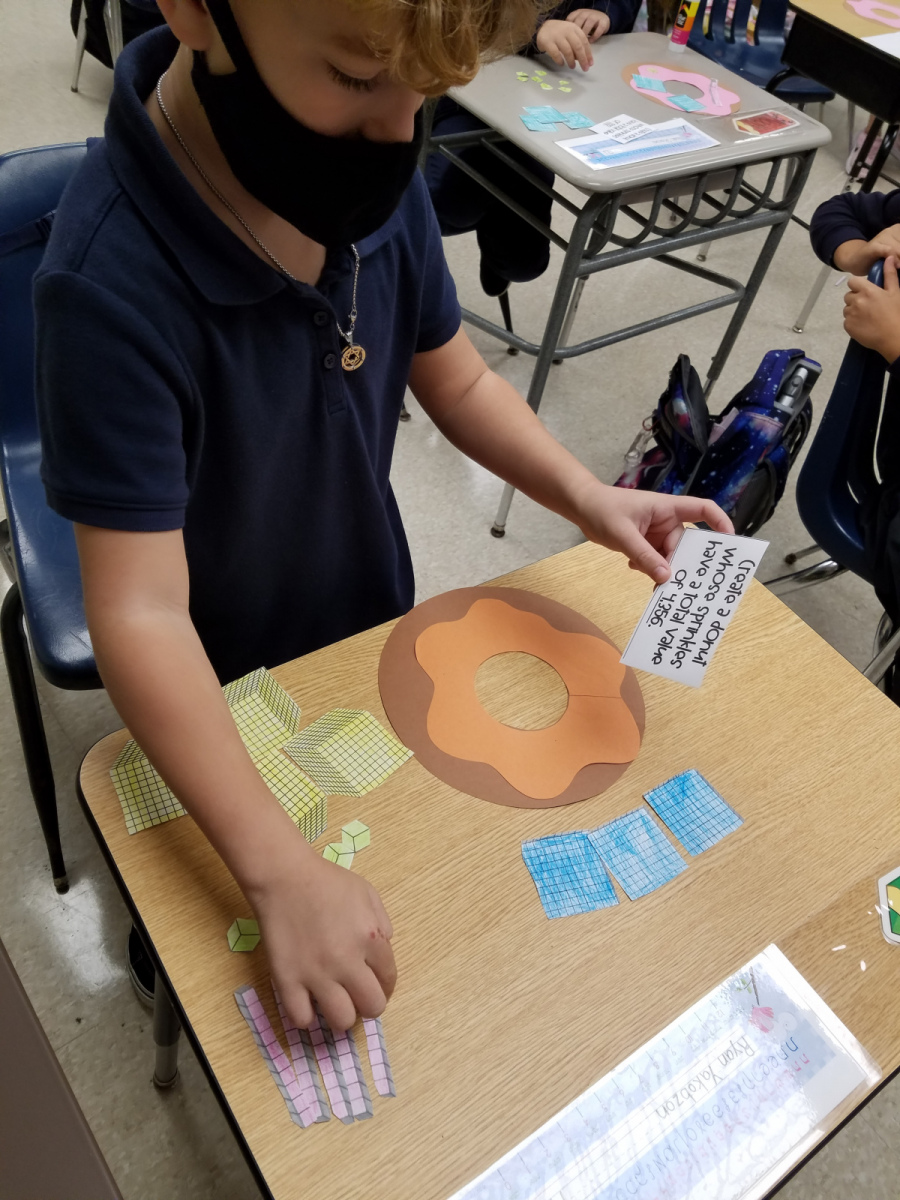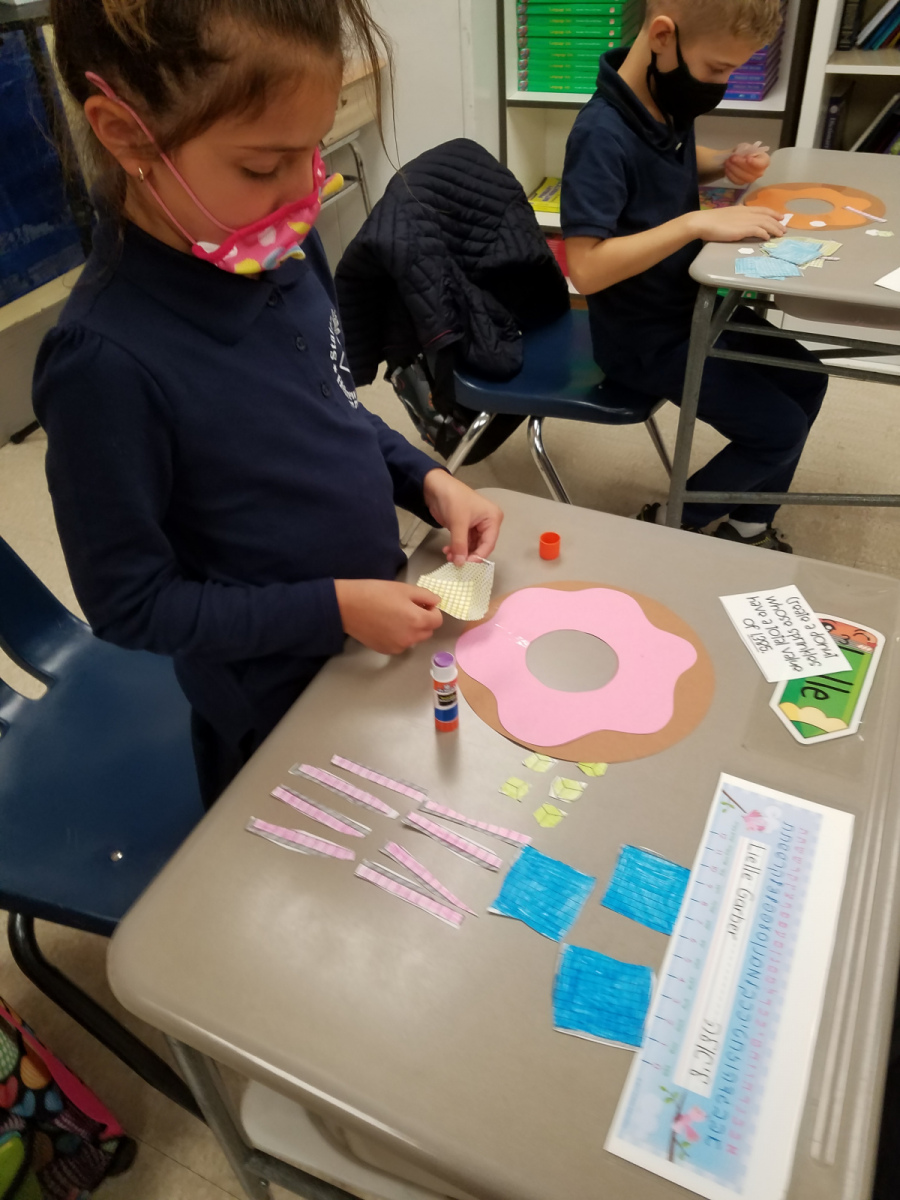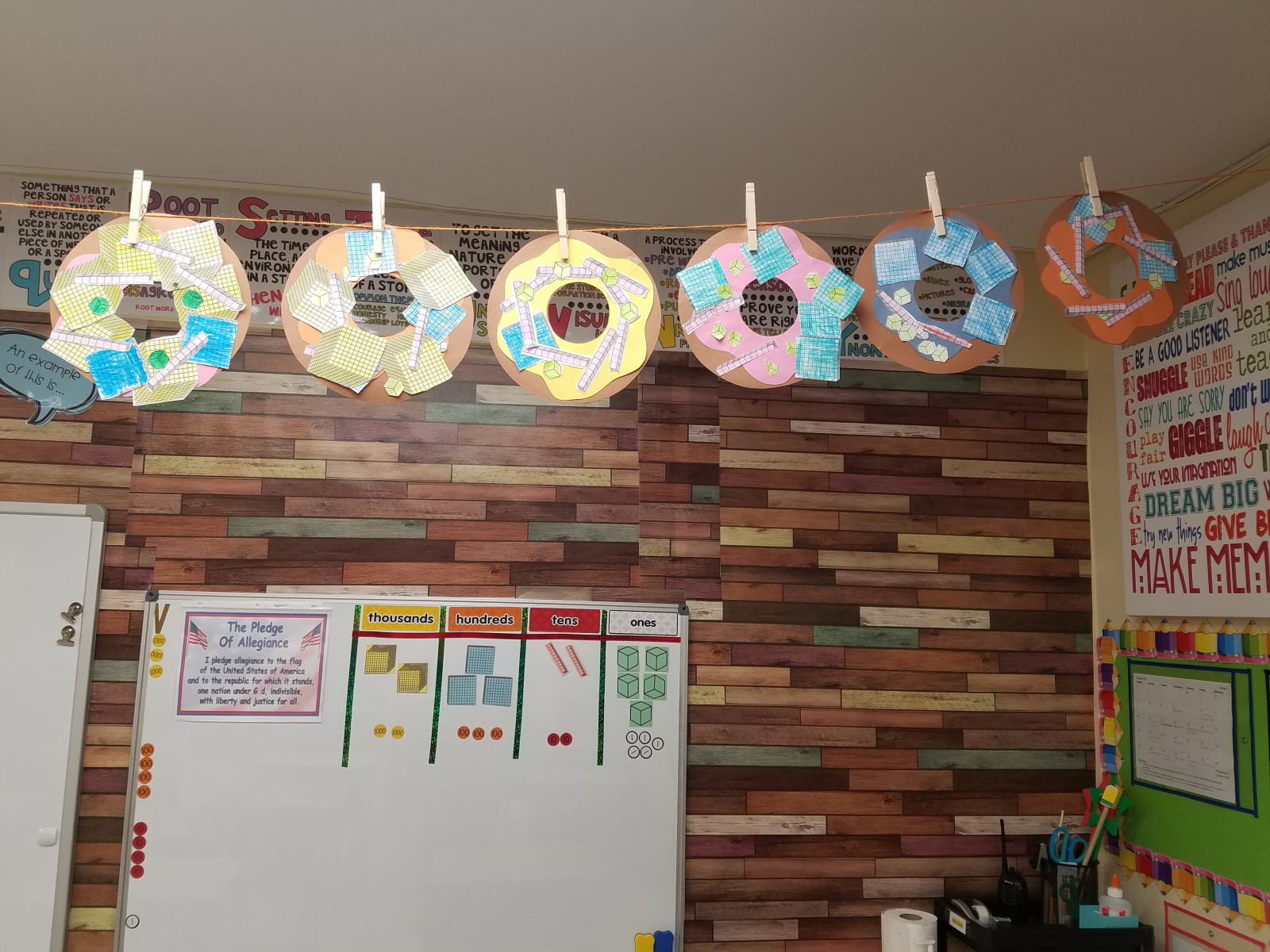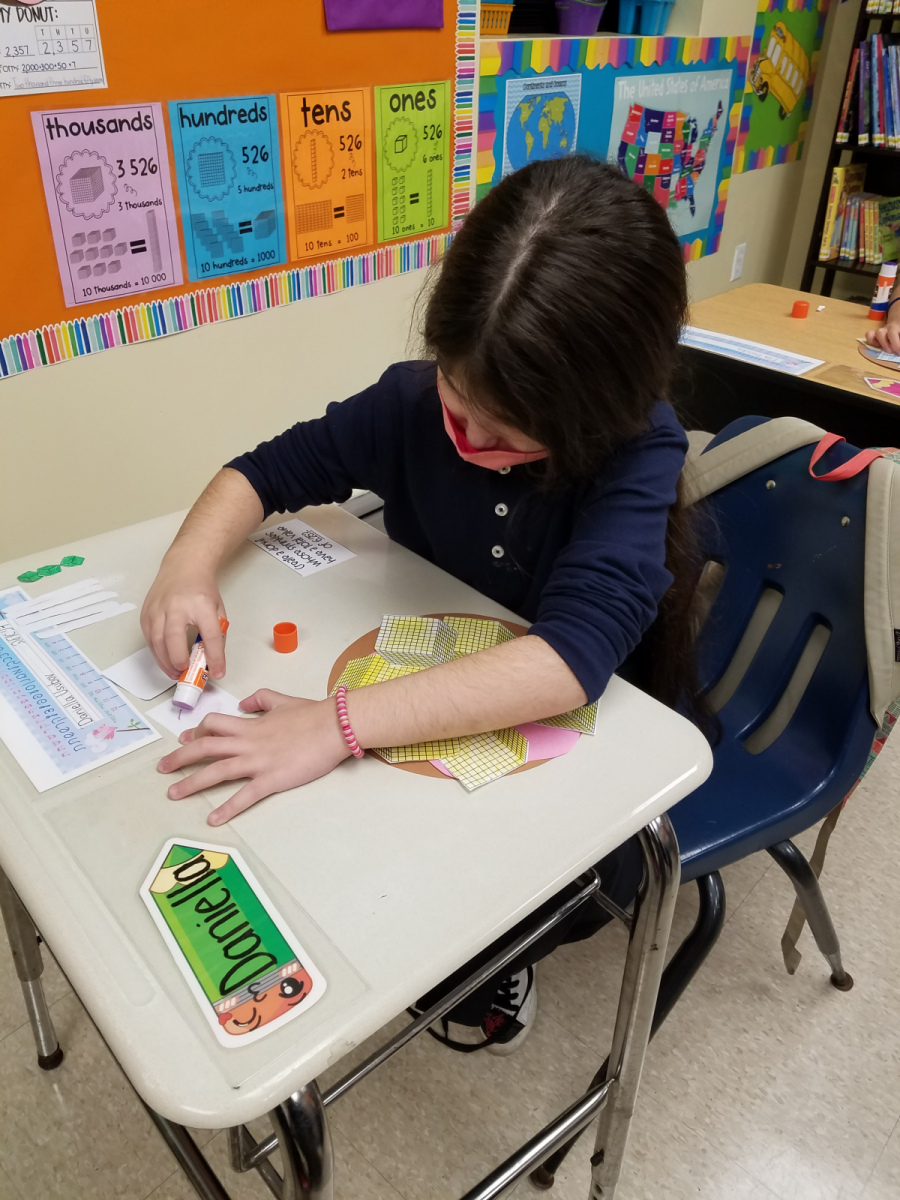Dvar Torah
Parshat
Noah
Imagine a five-year-old, walking with her mother into the hospital for her second chemotherapy treatment. The little girl knows what’s coming. She remembers the pain. She understands the nausea. She knows what it’s like to brush her hair and watch clumps come out. Yet, she holds her mother’s hand, and goes along, because “Mommy said I need to do this.”
The child doesn’t understand cancer. She certainly doesn’t understand how throwing up for a week cures it. But she knows that Mommy loves her. She knows that Mommy takes care of her. And she knows that Mommy knows what’s best. She fully trusts her mother.
That is the type of trust we can develop in Hashem—the almost blind trust of the child. I know that Hashem is looking out for my best interests. I know that Hashem loves me more than I love myself. And I know that Hashem knows better than I do what’s for my best. So I trust Hashem. I trust that Hashem is right here, in charge of my life, orchestrating the events for my ultimate good.
So I walk through life fully confident. Not confident that things will turn out as I have planned them. Not confident that life will have a Hollywood ending. But confident that Hashem has chosen the best path for me, and is leading me down it. So I take Hashem’s hand, so to speak, and walk with unwavering trust.
Taking Control of My Thoughts
One of the best techniques to grow in trusting Hashem is to memorize certain phrases and repeat them over and over like a mantra: Hashem loves me more than I love myself. Hashem knows better than I do what is for my best.
When I say these phrases again and again, they start to sink in. I begin to recognize on an emotional level that “I don’t really know.” I learn to trust in Hashem’s wisdom and kindness. And then I can do that which we humans find so difficult to do—accept what Hashem has decreed with joy.
Real bitachon takes a lifetime to develop. It’s a growth process, with many steps along the journey. Each of the Avot and Imahot had many, many difficult life situations—not because Hashem couldn’t do any better or because He was uncaring, but to emphasize that we can’t learn faith/bitachon just from stories, in the beit medresh. It’s only when we are challenged by real life situations that we are forced to respond and inspire ourselves that we CAN rise to the occasion. Do we transcend or do we just crumble?
Today’s generation is similar to Noach’s. Pernicious influences swirl about us, and the allure of the material world constantly threatens to engulf and silence the yearnings of our neshama, our soul that wants to believe, have hope, and exude strength.
Torah learning and living is the antidote to the corrosive forces that impinge upon us. With its uplifting, restorative energies we can ennoble ourselves immeasurably. As the crowning point of creation, man represents the nexus between Heaven and Earth, with each force struggling for dominance over man’s soul. Torah learning and living encourages us to immerse ourselves in the purifying waters of faith and connection to the Almighty. Bitachon counteracts the flood waters of decadence that threaten to suck us in.
Let us take care to ensure that our embrace of the Torah is complete and that we move on to deepen and secure our connection to the ennobling power of faith. Only thus can we continue to expand our personal growth and our ability to reach heights we never thought possible.
Wishing you a wonderful Shabbos.
Sincerely,
Dr. Chana Uzhansky
Chana Jane Uzhansky Ed.D
Head of School
SIHA
(718)987-9700 (ext 3)
sihebrewacademy.org
Special Announcement
Dear parents,
Thank G-d, programming is off to a great start!
We had a beautiful Rosh Chodesh Cheshvan assembly where we introduced our theme.
Our theme this year is stores. Each student is trying to build up their store credit by participating in our monthly contests. The monthly contest will be fulfilling a specified Mitzvah/act of kindness which we will explain to the students by that month’s assembly.
Building up store credit by completing the contest will not only earn the student a prize and ticket into the month’s exciting raffle, but will earn them “credit” that G-d will reward them with forever.
Cheshvan Contest:
Every time a student washes Netilat Yadayim for bread, correctly, they will earn a check on their chart. As well as when they wash in the morning, after waking up, they will make a check on their chart.
Washing for Bread:
Take the cup in your right hand,
Pass it to your left hand,
Pour twice on your right
And twice on your left.
Make the Beracha “Al Netilat Yadayim.”
Washing in the Morning:
Take the cup in your right hand,
Pass it to your left hand,
Pour on your right, left,
right, left,
right, left – 3 times on each hand.
We had a great time decorating washing cups at the assembly that the students can use to wash their hands correctly.
We are looking forward to an incredible year together!
Shabbat Shalom!
Enjoy a relaxing weekend!
Best Regards,
Miss Dershowitz
Mrs. Ferber
Judaics
Kindergarten and First Grade
We baruch Hashem had a great week in Kindergarten and 1st grade Judaics!
In Kindergarten, we were so excited to learn the first of the aleph-bet, aleph, with our friend Parpar. Parpar also taught us the mitzvah of emet – saying the truth. Please review our aleph-bet notebooks; we worked very hard on them. In first grade, we reviewed the letters gimmel through enda chaf.
In parsha class, we heard the story of Parshat Noach and made a fun “Noach’s teiva” project!
We also learned about Rosh Chodesh Cheshvan and the concept of always thanking Hashem. We know that Hashem’s love for us is “infinite”, as Ava smartly put it!
In first grade, we also learned about the months of the Hebrew Calendar.
In kindergarten, thank you to our Shabbat Ima – Brittany Sanders, and our Shabbat Abba- Ilan Kadymir!
In first grade, thank you to our Shabbat Abbas – Coby Rosner and Ethan Sandler!
We’re looking forward to another great week!
Mrs. Ferber
Second Grade
In honor of Rosh Chodesh Cheshvan SIHA students were treated to an assembly where the theme was water. Children were taught the correct way of washing Nitlas Yadiom. They were given a chart to be filled in every time they wash and say the correct Brocha. Next Rosh Chodesh their charts can be redeemed at the SIHA Prize store.
Mrs. Spiegel
Third Grade
This week 3rd graders started to learn some skills of the Hebrew language.
We started off with singing our Aleph Bet and Nekudot, practicing our reading, and writing it as well.
This week Tuesday Meir Yakobzon showed us that Torah is equal to all other Mitzvot, and made a beautiful decoration for our classroom.
We really enjoyed our Rosh Chodesh Cheshvan assembly where we reviewed the way we wash our hands in the morning and for bread.
We end off our week with the wonderful Parsha story as we get ready for Shabbat.
Mrs. Ferber
Fourth Grade
Dear Parents,
Yes, it’s true! We had our first full week of School! The children were very excited to learn and accomplish all that they did.
In Tefilla we spoke about fear of Hashem. We said over different Parables. The children Daven beautifully and it’s a pleasure to listen to them. Ben got loads of points and really tried hard. Matthew and Ethan were our soloists, and we are very proud of them.
In Kriah we had a quiz on the letters. The Students did very well and got high scores. I think we are ready to go on to the next level. Tanya, Alivia, and others did a super job and really knew it on a high level.
We spoke in Parsha class about Noah’s Ark and even did a model Ark in order for all the students to be able to understand it. It was tons of fun.
We started our “Lashon Tov” contest that whoever says something good about their friend, they get a point and the person it was said about, gets a point.
A big thank you to all the Parents that came to Orientation. May Hashem give us a healthy and successful year.
Have a Shabbat Shalom!
Rabbi Berelowitz
5th and 6th Girls
Dear parents.
Thank G-d, we had a wonderful week!
We began many different subjects, including Jewish law – Mitzvot, Ani Maamin – the 13 Principles of Faith, Tefilah – prayer.
We began our exciting Shomrei Halashon program. The girls are working to speak positively about others and are building up their points.
We began our Tefilah – Davening contest. The girls have a yellow key with 8 circles on it. Every day at the end of Davening, I go around and the girls tell me whether they deserve a hole punch or not. (I’m truly impressed by the girls honesty – you brought your daughters up well!) When all 8 circles on their key are hole punched, they get the next color key on their key ring. When the class has 150 key rings, we will be celebrating with a very exciting party. When a girl has all 5 colors of keys on her key ring punched out, she will receive a special prize.
This is because Tefilah – prayer – is the key to open and bring on the blessing in our lives that G-d is waiting to give to us, as soon as He hears from us. He wants a relationship with us because we are His dear children.
We had a wonderful time on Friday decorating cupcakes in honor of Shabbat. We also enjoyed singing Shabbat songs.
Shabbat Shalom!
Looking forward to another incredible week.
Enjoy your weekend.
Best regards,
Miss Dershowitz
5th and 6th Boys
It has been an accomplishing week!
Since our return to school after Sukot break, we learned alot about Parashat Bereishit and Noach.
We are davening nicely daily.
We started Mishnayot Mesechet Baba M’tzia Perek Shnayim Ochazim!
To celebrate this occasion Mrs. Kuritsky baked a delicious chocolate cake which was enjoyed by all students [and Rebbie as well]!
Avigdor and Matthew came in the classroom (as actors) holding on to a [my] Talit each exclaiming that they were the finder [of this lost, unidentifiable] and the rightful owner!
All boys had a chance to say their opinion of who is really the owner, acting as a Beit Din – Jewish, Torah Court.
We then delved in to the Mishna and actually began the text.
We are practicing getting our brachot correct, in a kinesthetic fashion.
We enjoyed a terrific Rosh chodesh assembly with an inspiring video on Wednesday, the first day of Rosh Chodesh Cheshvan.
Stay tuned to the news letter, to find out about more of our amazing accomplishments!
Rabbi Kuritsky
7th and 8th Girls
It was so nice to get back together again after sukot break and begin our inspiring lessons.
The girls really daven beautifully.
I am so impressed that many of the girls even daven shmone esre .
On Wednesday and Thursday we added the special prayer of ya’ale v’yavo to recognize that it was Rosh Chodesh Cheshvan.
On Thursday we even said [part of] Halel!
We have begun our weekly lessons in Parasha. So far we have learned about Parashat Bereisit and Parashat Noach.
We kicked off learning Navi with an introduction to sefer Yehoshua.
We began beur t’fila explanation of prayers by learning the translation of Elokai N’tzor.
There is more in store…
Stay tuned to next week’s newsletter!
7th and 8th Boys
Yes, it’s true! We had our first full week of School! The children were very excited to learn and accomplish all that they did.
In Tefilla we spoke about Baruch Sh’amar. In our Tefilla class, Kobe is our Super Davener. “Keep it up”. We spoke about how by Davening you are standing infront of Hashem the King of Kings and we have to Pray with all out intentions
In Gemara we are learning the Mishna that says cases of when a person goes to Galut – the city of refuge for killing a person by accident.
The boys really understood the cases well. Noah said over the Mishna to the class like a Professional teacher. The class had Partner learning. It was great to see how much they enjoyed the learning.
Topics from the Parsha:
• Noah and his family were the only people doing what Hashem wanted, they didn’t follow everyone else.
• Hashem could have saved Noah even without an Ark- but Hashem told Noah to build one for 120 years, so that the people would have a chance to repent.
• Hashem destroyed the world mainly because the Sin of stealing. We learned how careful we need to be with other people’s belongings.
• It wasn’t easy for Noah in the Ark: it was smelly, noisy, bumpy, and there were lots of animals that Noah and his family needed to feed at different times.
Noah sent out the Raven bird once, and the Yonah three times.
• Hashem promised never to punish the world again with a Flood. And Hashem showed Noah the rainbow as a sign of that promise.
• The Tower of Bavel led by King Nimrod, the wicked people wanted to build a huge tower and fight with Hashem (of course they weren’t able to). Hashem didn’t destroy all of the people because they had the character trait of “peace.” We see how important it is to have peace with everyone.
A big thank you to all the Parents that came to Orientation. May Hashem give us a healthy and successful year.
Have a Shabbat Shalom!
Rabbi Berelowitz
Thoughts from Mrs. Hazen
In praise of Mondays
I love Mondays. They’re my favorite day of the week.
A fun hidden benefit of teaching is that each Monday is a brand new promise. We start something new; learn something new, discover something for the first time. Even if the material is not new to me, it will be new to my students, and through their eyes I discover it again.
Another awesome thing about Mondays is that just like school years, no two Mondays are alike in a school. No two classes read a book the same way, or interpret it the same way. No matter what lesson I have in mind, I’ve never had two classes understand it the exact same way.
It can be easy to get caught up in a routine, and to start looking at a week as a series of tasks that have to be checked off. Nothing could be further from the truth. No two weeks and no two days are alike; so while Fridays are intrinsically awesome and the weekend is a prize at the end of each week, Mondays are equally as awesome, and a present to be enjoyed.
I’m going to leave this brief note with an excerpt from a poem by Emily Dickinson, which speaks to the idea of enjoying every day for what it brings. Happy weekend, everyone, and see you next week!
Forever – is composed of Nows –
‘Tis not a different time –
Except for Infiniteness –
And Latitude of Home –
Elementary School
Kindergarten
This week kindergarten did an amazing job! I am so proud of them. They learned how to spell and read their first words. They even read their first book! They learned the letters T, S, C, D, and O. They were able to put those letters together to read and spell different words. They played games in groups and made the letters using monkey string. They also learned all about the parts of a book. In math they learned a fun song to help them learn how to identify and write the numbers 1-10. Through dancing they are now able to count to 20 and subitize within 5 super fast. They really enjoyed listening to the Shape Monster book and they loved finding different 2D shapes to feed our shape monster. In science they learned all about their sense of touch. They got to feel different types of objects and they decorated a hand with different types of textures. They also learned about their sense of smell. They smelled jars that contained different scents and they used their sense of smell to determine what was in each jar. In social studies they discussed what it means to be fair and what it means to be responsible. They realized that even though they are young they can help others and be responsible in school and at home.
Ms. Syetta
First Grade
Our fabulous first graders are off to a great start this year! This week we made observations about soil. Students discovered that rocks and minerals found in the soil are used in everyday life. We also examined the soil during a Science lab and discovered that soil is made of rocks, sand, and humus. Students were excited to recognize that some of the creatures that help keep our soil healthy live right in their back yards! Finally, we recognize that planting trees and gardens also help to preserve the soil and prevent erosion.
Mrs. Adams
Second Grade
During our first full week of school, 2nd grade is diving into our opening units of study. In ELA we are learning about different kinds of sentences, and how to identify and differentiate between them. We started reading our first book, “The Chocolate Touch,” by Patrick Skene Catling. In math we are learning about place value, expanded form, and comparing numbers. Each student was able to come up to the board and write a number in the thousands in expanded form! In the pictures, you can see Zachary Kipnis converting a number that was written by his classmate, Joseph Cohen, into expanded form. You can also see Jaiden Rebibo, who insisted on trying a very difficult problem, working on the expanded form of a number in the ten billions!
In science, 2nd graders were so excited to learn about plants.
Students learned what a living thing needs to grow, and how all plants are alike. Different types of leaves that the students brought were being observed during a science class. The crayon leaf rubbing activity outlined was another fun way for students to see some of the details of leaves.
Mr. F
Third Grade
During our first full week of school, Grade 3 students accomplished a great deal. During our Grammar lessons, students continued to work on identifying complete sentences, fragments, statements, and questions. They had also had a chance to work in their spelling journals. There they were able to practice their spelling words and on their development of well bodied sentences. During our Reading lessons, students began their study of poetry. They were able to analyze the structure and elements of The Wind, by Robert Louis Stevenson. This is a genre that is going to be our focus during the next few months as we begin our class novel Love That Dog next week. During the Math lessons, students continued to learn about concepts within the Place Value. They were able to practice representing and converting numbers in multiple forms such as model, expanded, standard, and word. To demonstrate their understanding and for the simple joy of it, students created Place Value Donuts! It was a fun project which turned out wonderfully. They also have been refreshing their memories through addition and subtraction word problems. During our Social Studies lessons, students learned the meaning of and the importance of the Pledge of Allegiance. We analyzed each phrase and learned the meaning of every word and how they relate to our community, class, and world as a whole. Students were so enthralled in the concept of republic nations and kingdoms that we even dipped our toes into world history and the British Royal Family.
In Science, students learned and compared the characteristics of living things. They can’t wait to perform the first science experiment next week.
Miss Sasha
Fourth Grade
This week in math we started our unit on whole numbers. Related the value of each digit in a 5 or 6 digit number to its place. Arranged group of numbers in order. Found unknown numbers by adding, subtracting, multiplying and dividing. Rounded numbers to the nearest hundred thousand, ten thousand and hundred thousand.
In ELA students identified sentences, sentence fragment, declarative , interrogative, imperative and exclamatory sentences. Students also identified and wrote compound sentences using a comma and the conjunctions AND, OR, or BUT.
In writing students are working on personal narratives.
In Social Studies students were introduced to the study of geography and why it’s important. They also learned about the location and formation of the major landforms and bodies of water in the United States.
In Reading students started to read their first class chapter book Flora and Ulysses and they seem to enjoy it:)
In science, students learned and identified life processes of plants and animals; understood that living things are made up of cells and that cells perform different functions. A short Quiz about cells was assigned.
Mrs. Shats
Fifth Grade
5A
In ELA, 5A learned about sentences, sentence fragments and the 4 types of sentences.
They practiced finding central ideas of a text and support the central idea with key details.
We also had an amazing discussion about dignity as we began our class novel, Maniac Magee.
In social studies, students practiced learning about geography. They practiced finding the equator and prime meridian. They learned about how to find the western hemisphere and the continents within it.
In science, A new chapter was introduced to the students. Chapter 1 “From single cells to human body” Students will learn and analyze processes that take place in cells.
Students were able to compare and describe the interactions that take place in plant and animal cells. Having observed the onion cell under the microscope, students were able to learn the differences between animal and plant cells in addition to the function of the different parts of the cell.
In Math, 5A has been working on factors and multiples, identifying whether numbers are prime or composite, and challenging word problems.
Ms. Tatic would really like to commend Izzy on being a great student! Good job!
5B
In ELA 5B learned about sentence fragments, sentences, and interrogative and declarative sentences. They practiced finding central ideas of a text and supporting it using key details.
Students had a blast presenting their interpretations of Camp Green Lake before beginning our class novel, Holes.
In social studies, students practiced learning about geography. They practiced finding the equator and prime meridian. They learned about how to find the western hemisphere and the continents within it. Ms. Tatic would really like to commend Ari for his hard work! Keep it up, Ari!
In science, A new chapter was introduced to the students. Chapter 1 “From single cells to human body” Students will learn and analyze processes that take place in cells.
Students were able to compare and describe the interactions that take place in plant and animal cells. Having observed the onion cell under the microscope, students were able to learn the differences between animal and plant cells in addition to the function of the different parts of the cell.
In Math, 5B has been hard at work with mastering their multiplication and division skills, finding the factors and multiples of numbers, and challenging word problems.
Middle School
Middle School ELA and Social Studies
6th Grade
In ELA, students started our novel study of Fish In a Tree by Lynda Mullaly Hunt. Students read the first section of the book, had an awesome discussion in class, and answered reading questions in their notebooks. In grammar, this week was a review of sentences, sentence fragments, subjects and predicates. Students also started their vocabulary study with our first chapter!
In Social Studies, we started our year with a chapter on geography. We reviewed our map skills, and learned about the geography of the Fertile Crescent in preparation for our unit on ancient Sumer.
Mrs. Hazen is impressed with all of her students, but Charles deserves a shout-out. He did amazing in both ELA and Social studies, and received a perfect grade on his first quiz!
7th Grade
In ELA, students started our novel study of Fever, 1793 by Laurie Halse Andersen. Students learned the historic context of America’s first epidemic, and participated in a classwide virtual trip to Historic Williamsburg, where we looked at the inside of a house from the 1700s, and a coffeeshop. Students read the first section of the book, had an awesome discussion in class, completed a vocabulary activity and answered inference questions. In grammar, this week was a review of sentences, sentence fragments, subjects and predicates. We also started our first vocabulary study chapter!
In Social Studies, we learned about the earliest Americans: the Maya, Inca, Aztec, and the various tribes of North America. Students also participated in a primary source analysis activity about Christopher Columbus.
Mrs. Hazen would like to commend Eva and Madi for being amazing students this week!
8th Grade
In ELA, we started our first novel unit of the year: Lord of the Flies by William Golding. We started with an activity defining allegory. We read the first part of our novel and had a riveting discussion in class. Students answered reading comprehension questions, and analyzed the novel’s language for tone and mood.
In Social Studies, this week was all about World War I! We started our unit on this historic event by discussing the causes and context of the war. Students also participated in an activity where they analyzed primary sources related to WWI.
Mrs. Hazen is particularly impressed with Jeffrey, who is an example to all others in terms of scholarship and character!
Middle School Math
6th grade
The sixth grade class has become masters at comparing and arranging negative and positive integers, identifying numbers’ opposites and absolute values, finding the greatest common factor of two numbers, and least common multiple.
7th grade
The seventh grade started off the week by reviewing how to add, subtract, multiple, and divide fractions. Throughout the week they have also been hard at work simplifying algebraic equations and writing and solving one step equations.
8th Grade
The eight grade class have been solving multi-step equations. They have been also applying their skills into solving word problems by defining variables, writing equations, and then solving them.
Mrs. Bronstein
Middle School Science
6th Grade
Students learned the earth’s major systems and how they interact; common tools used by Earth scientists;
Activity: Students created a layered book to help them organize the important steps of the Scientific Method.
During an experiment students were able to define and calculate the density of a solid using water displacement.
7th Grade
Welcome Back to SIHA’s finest form of communication regarding the progress of all SIHA students. 7th grade is discovering the ways in which we identify the characteristics of physical properties, the difference between a physical and chemical change and how we determine the various characteristics of matter. Students will watch various videos and conduct hands-on investigations to determine the density of an object.
8th Grade
Students are discovering what it means to be alive! Students will be completing a Scientific Explanation answering the essential question “What does an organism need to be deemed alive?” They are investigating various articles and will watch a few videos to begin their investigation, so they can determine a position and make a claim. Once their investigation is complete, students will make their claim and support it with evidence from the sources they used to complete their investigation.
Jewish History
Jewish History is off to an amazing start. I have been getting some very intriguing questions that are giving me a challenge! Thank you Noam for your amazing questions. Thank you Jeffery, Ilan, and Koby for fantastic answers!
7th Grade started out at the very beginning. We finished the introduction and are moving on to an overview of the timeline of Jewish History.
8th Grade reviewed what we covered last year by exploring the people of each era. We then began our study of the first Jewish Kings! We took a brief look at King Shaul and moved on to learn about King David!
